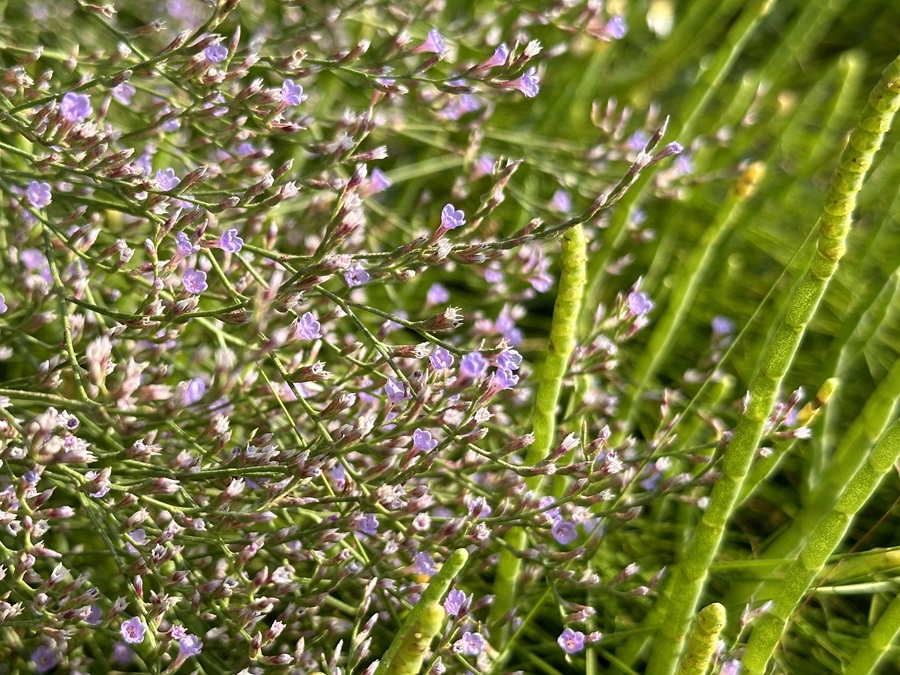
The intertidal zone around the circular 40-foot-deep Salt Pond in Eastham is divided into strata: the inner ring is composed of the tall saltmarsh cordgrass, which prefers the inundation of the high marsh, while the outer ring is dominated by a second flaccid graminoid. Shimmering above those weak-stemmed tufts in the low marsh are the inflorescences of Carolina sea lavender, a native that has only the shade of its bloom in common with the more familiar garden perennial.
Like the grasses and glasswort around it, Limonium carolinianum is a halophyte, that is, a plant that has adapted to life in a saline environment. With its roots more or less in the sea, Limonium carolinianum survives by having evolved salt glands — specialized organs on its stems and leaves that expel the extra salt back onto the surface of the plant.



